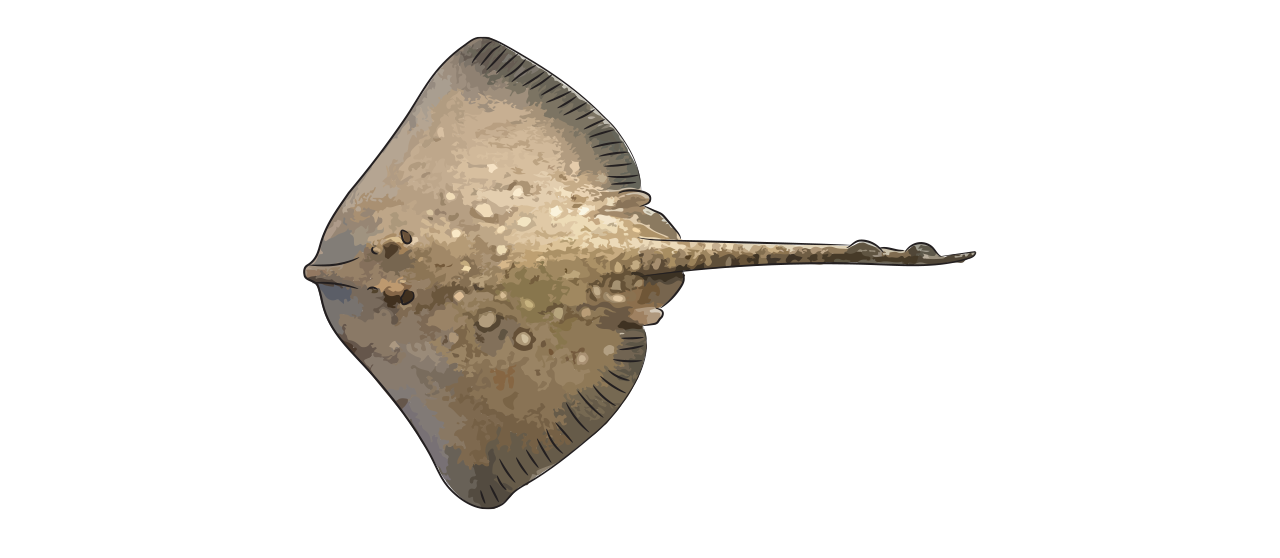Common Skate| Fish Species Guide | Angling Direct

Common Skate
aka Dipturus batis
Similar to rays, skate are grey-brown in colour with blue-grey underbellies and tend to have smaller teeth and lack spines. Found on sandy or muddy seabeds, as deep as 600m, common skate is now only distributed in the Celtic Sea, off the coast of North-West UK and parts of Europe. Resembling wing-like fins, flattened body with broad pectoral fins, which it uses to swim, the fish has a long pointed snout and tail with many horn-like spikes along its spine.
Skate have 2 electric organs that produce electric shocks, which are strong enough to signal different behavioural activities such as communication with other fish or to signal reproduction. This electric impulse is weak so it does not cause harm to humans handling skate.
Stats
Status
Habitat
Near muddy or sandy sea beds, between depths of 100m to 600m.
Bait
Whole or strips of mackerel, herring, coalfish, pouting, pollack, whiting & squid.
Native or Invasive
Native
Where
British waters west of Scotland in particular, and Southwest Ireland, in the Celtic Sea and across the Atlantic.
 Catch Experience
Catch Experience
Video
Blog Highlight
Thornback Rays, Skate, Roker - Boat Fishing Rigs, Tips & Tactics!
For this latest episode we headed back down to Essex to fish with our good friend Phil White, aboard his boat the Chinook III, with one species in mind, the Thornback Ray or Skate/Roker as it’s also known.The spring months can be an excellent time...
Read More